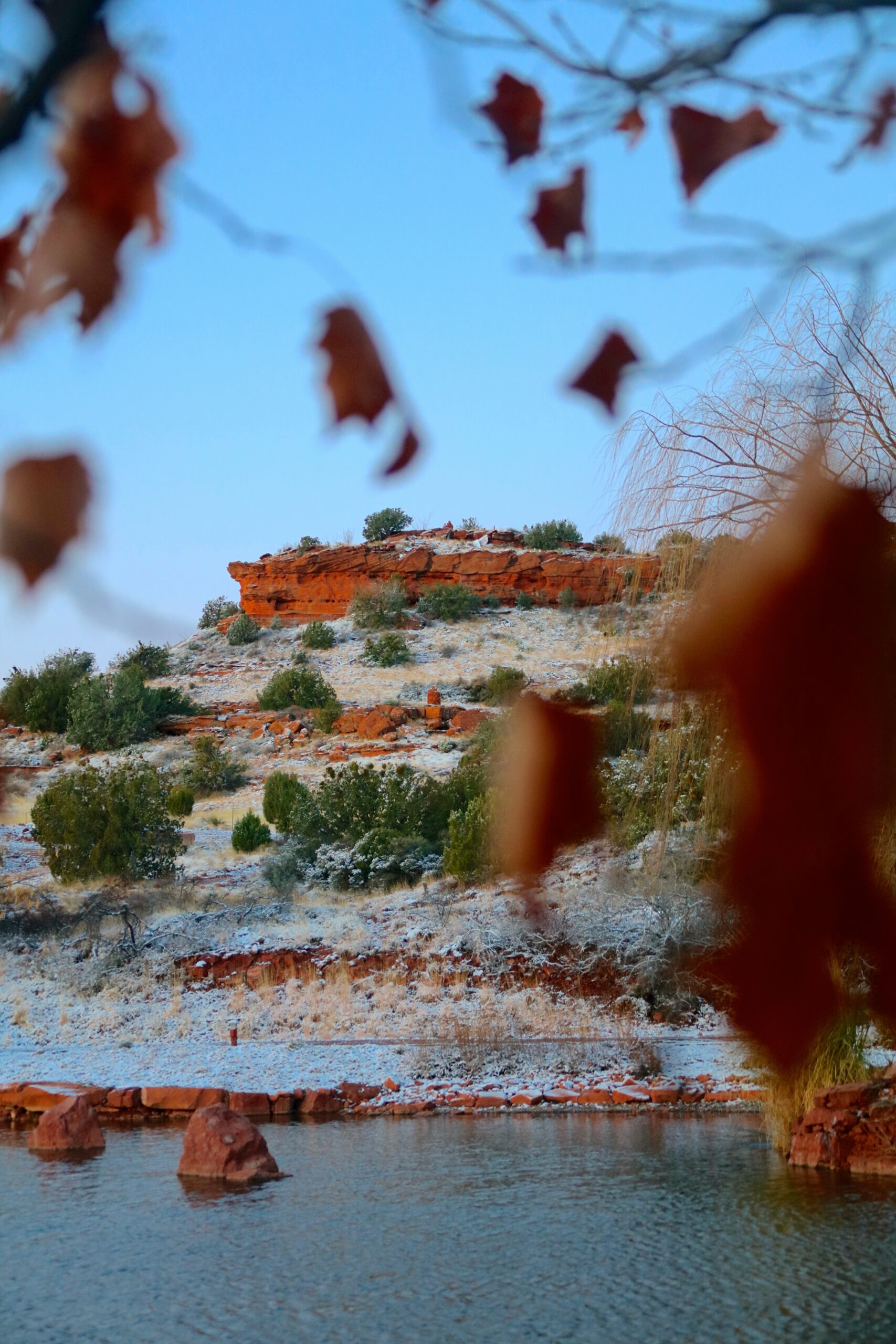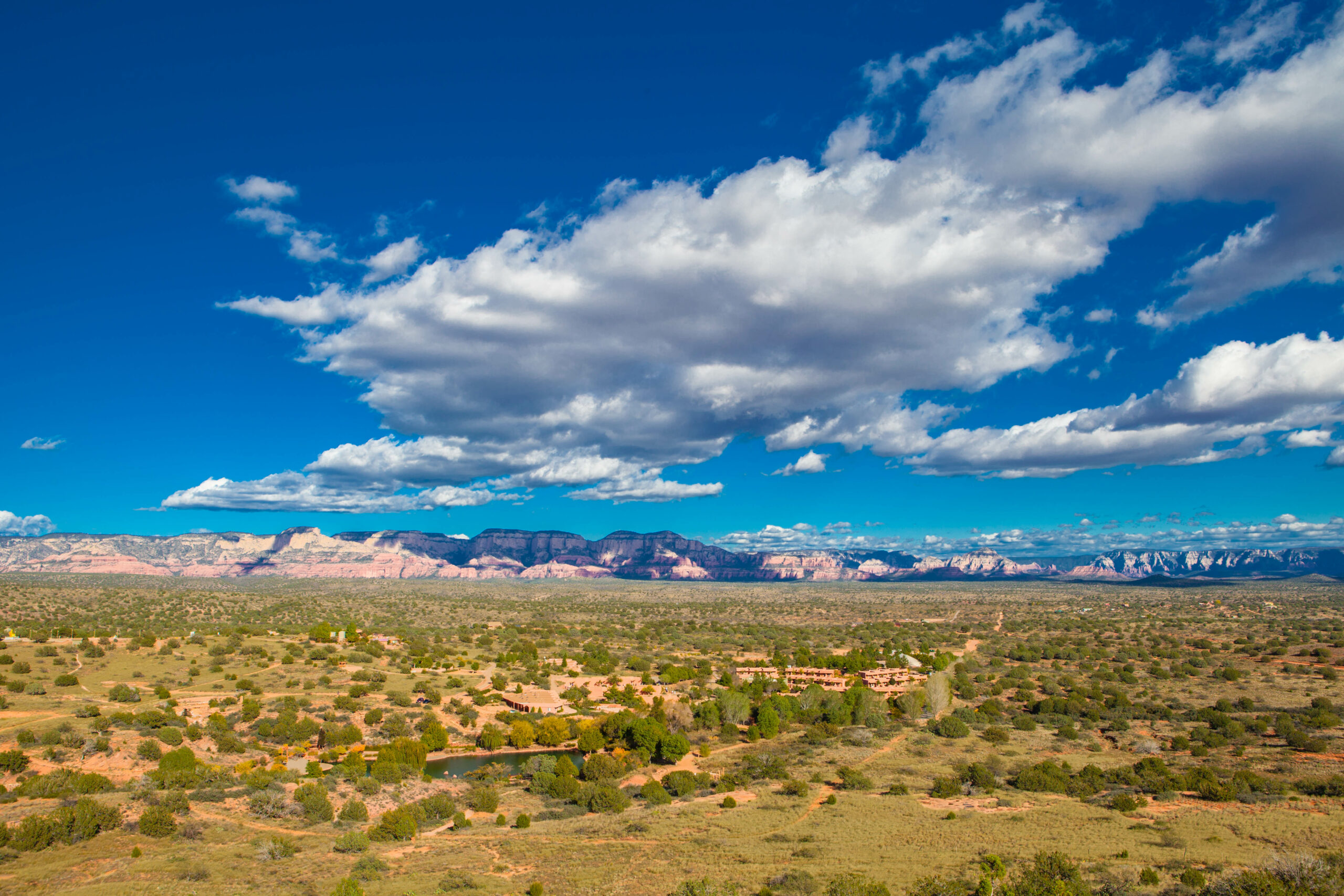Sedona’s Verde Valley is a destination famous for its cultural evolution and opportunities for spiritual awakening. Sedona Mago Center for Well-being and Retreat’s president, Ilchibuko Todd, fell in love with the location and experienced a deep connection to the Valley, with its multiple vortexes, cultural history, and healing powers.
Nestled between the Secret Mountains and the Verde River, Sedona Mago, like the Verde Valley, is a fusion of cultures and history. It is located roughly at the center of an acute triangle in the western Verde Valley known as Tuzigoot, Palatki, and Honanki.
Here, Todd shares seven fun facts about this irresistible spot in Sedona.
- The Red Rocks tell the natural history of the region
Sedona’s red rocks formed about 210-370 million years ago. They are made up of basalt lava, Kaibab limestone, Toroweap sandstone, Coconino sandstone, hermit shale, Supai sandstone, and Redwall limestone. The rocks have multicolored layers and strange shapes including spirals, hoodoos, and more. The famous red colors come from hematite (a type of iron oxide) that stained the sandstone. Limestones were built out of fossils from aquatic plants and animals from when tropical sea life was present in the Valley.

- A volcanic eruption forced settlers out long ago
An eruption of the Sunset Crater volcano in 1064 A.D., forced the people living there to migrate abruptly. Over time the volcanic ash, along with the increase in warm temperatures, caused the land to become fertile and rich with minerals that crops needed to flourish. This attracted ancestors of the tribes who left and others who lived outside of the Verde Valley to build towns that could support a lifestyle for their families.
- Many different cultures have migrated through the area
During the 1400s, climate change and warfare between native clans eventually caused the population to dwindle. By the mid to late 1800s, when American settlers invaded the land, only semi-nomadic tribes remained. Today, signs of previous peoples who populated the land can be experienced by seeing local site ruins, rock cliff dwellings, pueblos, as well as ancient pictographs.
- Jerome eventually became a ghost town
For about two hundred years (from 1100-1300 A.D.), the Verde Valley was an active and prosperous territory. During that time, an estimated 5,000 people lived along a major trade route called the Palatkwapi trail, where farming and agriculture bloomed. The second golden era came after the Spanish discovered copper in 1583 and mining took hold. Between 1883 and 1975, the Verde Valley produced 3 billion pounds of copper; 52 million pounds of zinc; 1.3 million troy ounces of gold; and 48.3 million troy ounces of silver. However, by the 1950s, the steady practice of roasting high- and low-grade ore had degraded air quality and negatively impacted the health of miners. The industry eventually faltered, and Jerome became a ghost town with fewer than 50 people living there. To rebuild, the city repositioned itself to rely on tourism as its primary source of income.
- The Verde River is one of the last free-flowing rivers in AZ
While everyone is familiar with the deserts of Arizona and the red rocks of Sedona, many are unaware of Sedona’s Verde River. The Verde Valley is popular amongst photographers, kayakers, canoers, and adventurers due to its beauty, swimming holes, fisheries, river, and more. The river supports more than 100 species of birds, coyotes, deer, and other mammals. It has three sections: the upper, which begins in Paulden and continues through the wilderness of the Coconino and Prescott National Forests; the middle, which begins in Clarkdale and continues along the Verde River Greenway into the Cottonwood and Camp Verde communities; and the lower, which begins at Camp Verde and passes through the Tonto National Forest before ending at Horseshoe Reservoir.
- It was a Hollywood hot spot with more than 100 movies being filmed here
Multiple Hollywood classics were created in Sedona’s Verde Valley, which included famous faces from John Wayne to Elvis. Some movies filmed in the area include “Apache,” “The Karate Kid,” “Midnight Run,” and many, many more. This Hollywood boom paved the way for the once-thriving town of Jerome to re-build.

- It holds world-class golf courses, resorts, hiking, and more
Sedona’s Verde Valley has more than 100 trails, eight golf courses, seven main vortexes, and countless luxury resorts. One of the prized places to visit in the Verde Valley is the Sedona Mago Center for Well-Being and Retreat. Situated on 173-acres, the not-for-profit organization offers healing, spiritual, and self-discovery retreats, plus personal development workshops. It’s the perfect place for a restorative stay. The Center was established to share the principles and spiritual practices of ancient wisdom and tradition of SunTao with one central mission: to love humanity and the Earth.






